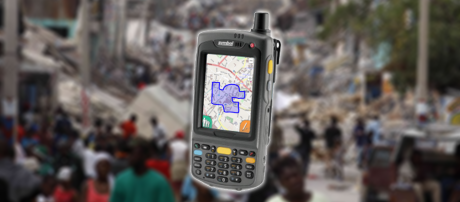Creating a real-time geographical uplink to help disaster relief

A Czech team of students from the University of Brno at the Imagine Cup 2010 in Warsaw, Poland, though didn't make it through to the finals of the competition, have created an application designed to rebuild the local knowledge of infrastructure in a disaster zones such as Haiti.
What does it do?
In short, the GINA (Geographical INformation Assistant) is a software solution that sits on a mobile devices with Windows Mobile and GPS function such as the HTC Touch 2/Diamond 2. It gives users such as aid agencies, humanitarian organisations - even police, local emergency services and governments in disaster zones the ability to assist others in guiding them around an unknown environment, where ordinary maps and coverage are rendered useless.With the integrated touch technology, users can add to and edit maps of their location and share over cell networks with other users to help build up a new, accurate map of the area. Using an in-built camera, images can be applied to the map to give perspective and depth to those areas.
However, in places such as Haiti after the earthquake, the infrastructure and cell networks were ravaged and citizens and aid found it difficult to communicate with each other. When there is no cell or Internet connection, information held on the mobile devices can be sync'd with each other in close proximity and uploaded once a viable connection can be found.
Data is also stored in the cloud to allow real-time access to geographical data to better assist those who are on the ground and in the field.
Going to those who need it, whoever they are
The developers were keen to point out that this, given time and investment, could easily and preferably be available to other users, such as BlackBerry, Android and iPhone users, to ensure as many people were compatible with this system.One of the students I spoke to is studying for a PhD and hopes to carry on learning, while developing GINA further but altruistically and not for profit.
"We want to go where we are needed, and will respond to those asking for help", one of the student developers told me. "It's beyond Microsoft and their competition."
Though somewhat restricted to the technologies they were required to use, another developer said that, "we have good support from the company, but there is no 'dogma'. We want to make more partners from the private, public and third, voluntary sectors".
The two student developers of GINA there said they want to go on to found their own software company, developing GINA further into a more sustainable, developed concept, while the other wishes to go into graphics and product design.
A clear passion for the creation they have made showed through, and was personally quite inspired by the humble nature they take in their development approach, whilst confident that they can make a real difference to areas of the world that need it.
Disclosure: Microsoft provided my travel and hotel costs, though no obligation was made on my part. This article is impartial and in no way swayed by the provisions given. I’m here to talk to and about the students, not the company.
